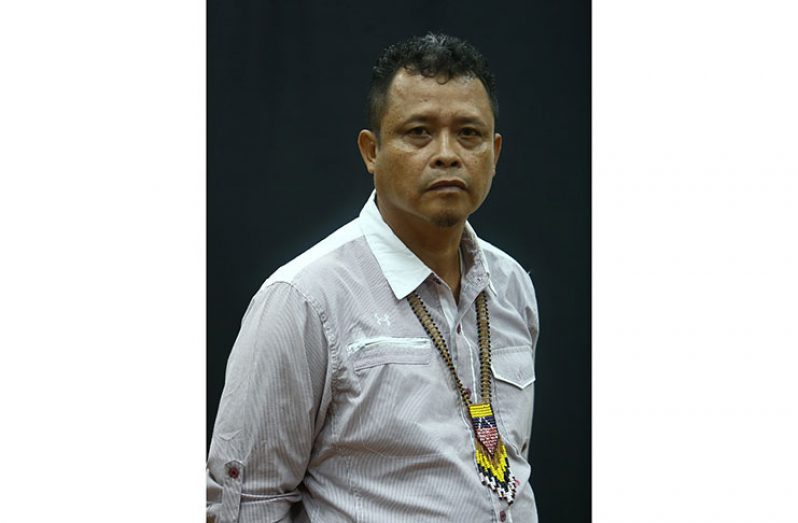–as COVID-19 cases climb to more than 50 in one month, two deaths recorded
KWEBANNA, a little community nestled in the heart of Region One (Barima-Waini), has gone into lockdown for 14 days, after becoming a hotspot for the novel coronavirus (COVID-19) within the past month.
Since recording its first case on September 19, 2020, there has been no end in sight to the proliferation of COVID-19 in the community, as cases have climbed to more than 50, with two of those persons losing their lives to this scourge.
Creating the right conditions to effect a reduction in the spread of COVID-19 has been a challenge for village authorities, because residents are close-knit, and seldom follow the established guidelines.
The move to lockdown the community, therefore, comes as a desperate effort to stabilise the situation and save lives, said Toshao of Kwebanna and Vice-Chairman of the National Toshaos Council (NTC), Paul Pierre during a telephone interview with the Guyana Chronicle on Friday evening.
“Well, due to the rise in COVID-19 cases in the village, and based on advice from the health sector, regional administration and the police, we have decided to lockdown the village so we can get control over the situation… This is the only way we can get some control, because of the fact that COVID-19 has spread rapidly over a number of weeks,” Pierre said.
With a population of just over 900 people, the toshao believes it is imperative that they act now to protect those persons, and ensure that no more lives are lost.
Over the next 14 days, no one will be allowed in or out of the village, unless authorised by the relevant authorities. This and other measures will be supervised and implemented by regional authorities and the Guyana Police Force (GPF).
MIGHT BE EXTENDED
“We are looking to do this for 14 days in the initial stages, and if it does not get better, we would have to go a bit longer,” Pierre said, adding that the police will play a big role in enforcing not just the new measures, but also the national guidelines/emergency measures.
These emergency measures were made pursuant to Paragraphs (1) and (2)(b) of the Direction by the President, given under the Public Health Ordinance, Cap. 145, and published in the Gazette, Legal Supplement –B, on March 16, 2020.
According to health authorities, the COVID-19 Emergency Measures (No. 8) will expire on October 31, 2020, unless earlier terminated, extended or amended by notice of the Minister of Public Health after an assessment of the prevailing public health conditions.
The control measures, which include a national curfew and social distancing guidelines, are often hard to cope with, but considering the prevailing circumstances, persons must also be cautious and vigilant, as they continue to do their part in the fight against COVID-19.
There have been mounting calls for persons to adhere to the COVID-19 measures, but even in little Kwebanna, these calls have been ignored.
“The idea of this lockdown is to keep people at home, and from moving too much, because there has been a lack of adherence to the measures, and that is what is causing the spread… So this is the only way to control the situation,” Pierre said.
ECONOMIC IMPACT
Even though this is being done to safeguard the health and well-being of residents, the lockdown is expected to drastically affect the major economic activities in the community, which include farming and lumberjacking.
“We do a lot of lumber, so the lockdown would affect us. We have a sawmill there, and especially during this time, leading up to Christmas, we would get a lot of orders from persons in Moruca and Kaituma,” Pierre said, noting that the lockdown will severely affect business because persons would not be allowed to work at the mill.
He said, however, that farmers will continue to operate their farms, but will only be allowed to move from their farm to their houses.
Despite the inevitable economic decline in the community, the toshao assured the Guyana Chronicle that residents will not go hungry, as the regional administration is already mobilising food and relief hampers. These hampers are expected to be delivered today.
Additionally, other organisations like the Amerindian Peoples Association (APA) and the NTC will be making donations where necessary.
“I am sure other agencies will step in if the situation gets worse, but I am hopeful that the lockdown will curb whatever is happening,” said Pierre.
It was reported recently that as part of efforts to improve and increase testing for COVID-19 in hinterland communities, the authorities have sourced 20,000 antigen tests which will produce results within minutes.
Hinterland regions have been heavily impacted by the COVID-19 epidemic, with Regions One recording 662 cases; Seven (Cuyuni-Mazaruni), 371 cases; Eight (Potaro-Siparuni), 128 cases; and Nine (Upper Takutu-Upper Essequibo) with 375 cases, accounting for over 38 per cent of the total cases in Guyana.
TESTING BEING DONE CENTRALLY
And as it is now testing for COVID-19 is done centrally at the National Reference Laboratory in Georgetown. Authorities would first have to acquire a sample from a person suspected to have COVID-19, and then send the sample to Georgetown where medical professionals will conduct a Polymerase Chain Reaction (PCR) test, which takes hours to produce results.
“We have ordered the antigen tests. This is not the PCR test… it is done right at the site once you suspect COVID-19… you run the test and get it back within 45 minutes,” said Minister of Health Dr. Frank Anthony during a COVID-19 update last Wednesday.
Each hinterland community is already equipped with fixed sites for testing, but Minister Anthony said in cases where there is a high infection rate in a particular community, a mobile team will be deployed to conduct testing and contact tracing.
Minister Anthony said trained COVID-19 personnel are in every region collaborating on the clinical aspects of treatment, conducting contact tracing and environmental sanitation to ensure that the disease is being managed.
Detecting cases of COVID-19 in remote hinterland communities has, however, been a challenge for the Ministry of Health, but the ministry has since turned to toshaos and the Guyana Police Force to assist with contacting tracing.
“We have a difficulty tracking people in hinterland regions because some of them do not have telephones or a formal address, or any other form of contact information… to find them and make contact is difficult, but we have been working collaboratively with the police and toshaos to find those people and get them isolated,” said Chief Medical Officer (CMO), Dr. Narine Singh in an invited comment on Wednesday.
Considering the unavoidable challenges due to the remoteness of those communities, Dr. Singh advised persons in hinterland regions to adhere to the control measures, which also includes isolation once tested positive for COVID-19.




.png)









